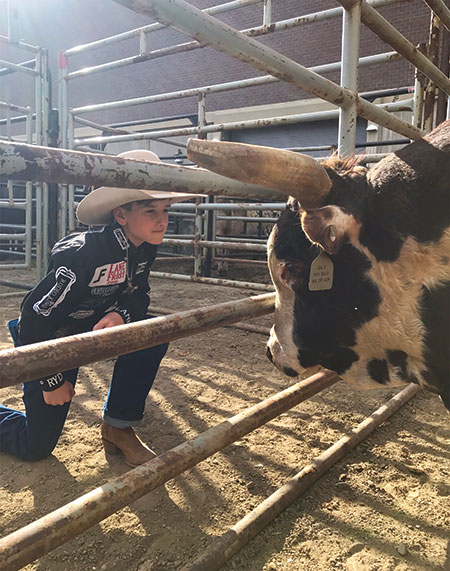
Moody’s rising rodeo star
Story by Paul South
Submitted photos
Truth be told, the closest most of us have come to mounting a bucking bull was as a kid on the 25-cent-powered horses at the local five and dime, watching John Travolta in “Urban Cowboy” in college, or worst-case, when liquid courage in a shot glass convinced usually sensible adults that they could tame the mechanical bull at the neighborhood cowboy bar.
But the miniature bulls that Moody’s Ryder Carpenetti takes on in rodeos from North Carolina to Las Vegas are the real deal – 1,200 pounds of thick muscle and foul mood that are as unpredictable as it gets. These animals can with a buck, or spin or dip send their riders into the air like a rag doll, leaving them with a face full of mud, bumps and bruises – or worse.
But Carpenetti has captured three world titles riding miniature bucking horses and half-ton bulls.
He’s 4-foot-6, weighs 71 pounds and still has some of his baby teeth. And he’s only turned 12 years old in September.
As John Wayne might put it: Pilgrim, this is one tough little hombre.
It all started with a bulletin board. Ryder’s Dad, Frankie Carpenetti, remembers.
“He was 3 years old. I saw a flier at a Tractor Supply down in Sterrett, and they had ‘mutton bustin,’ you know, where they ride the sheep. I said, ‘I’ll take him down there and let him ride in that. Maybe he’ll ride in that, and then he’ll be done with it.”
Ryder won. And he wasn’t done. Turns out, the sport had lassoed the toddler. From there it was riding his first calf at 5, then steers to junior bulls to mini-bulls. In 2013, he won his first world title in mutton busting. In 2015, he captured world titles in bucking horses and mini bulls.
Watch Ryder Carpenetti on YouTube and you see a kid as cool as the backside of a pillow. He has a quick grin that gleams from beneath the long shadow cast by his big, black cowboy hat. While waiting for his next ride, he waits quietly. His demeanor seems more school play backstage than bull rider.
 Once his protective gear is on – a helmet and vest mandated by the MBR (Mini Bull Riders Association) – he’s unflappable.
Once his protective gear is on – a helmet and vest mandated by the MBR (Mini Bull Riders Association) – he’s unflappable.
“He really doesn’t have any fear,” Frankie Carpenetti says.
“We have dirt bikes at the house, and he does jumps and all that. When he gets on the back of the bucking chutes, a lot of the kids are nervous. You can tell. We always have people say, ‘How’s he so calm?’ He just sits on the back of the bucking chutes and waits his turn. Nothing bothers him. He’ll find my wife in the crowd, and he’ll wave to her. The other kids, they’re back there shaking and stuff.”
Carpenetti added, “There’s times when I’m a little more nervous than he is. We go to a lot of big deals. The PBRs (Professional Bull Riders), the Built Ford Toughs (rodeos), you know. I guess I get a lot more nervous than he does sometimes. I guess my nervousness would be him getting hurt. He’s pulled the tendons out in his elbow a couple of times, aside from the normal bumps and bruises.
“But nothing bothers him. He’s in his own world right there. He’s getting ready to ride,” Frankie Carpenetti said. “He’s in his own zone. He just gets in there and rides”
Like any mother, April Carpenetti had the jitters, too. But now, her worries aren’t as great as when he plays youth football in Moody, as a running back and defensive back. On a recent Saturday, Ryder played a half day of football, then was on the road for a rodeo in Bessemer City, N.C.
“Any mom would be terrified,” she says. “But it’s just like anything. The more they do it, the more I feel comfortable. He had to move up in (weight class) in football. Right now, I worry more about him playing against bigger kids in football than I do about him rodeoing. I guess it’s just something he’s been doing so long that I’m comfortable with him doing it.”
 At only 12, Carpenetti has drawn comparisons to the late Lane Frost. Frost, who won the Professional Rodeo Cowboys Association (PRCA) Bull Riding World Championship in 1987 when he was just 24, was killed in the arena in 1989. To this day, long after his death, Frost casts an almost mythic shadow over the sport.
At only 12, Carpenetti has drawn comparisons to the late Lane Frost. Frost, who won the Professional Rodeo Cowboys Association (PRCA) Bull Riding World Championship in 1987 when he was just 24, was killed in the arena in 1989. To this day, long after his death, Frost casts an almost mythic shadow over the sport.
Gary Leffew, a member of the Pro Rodeo Hall of Fame and the 1970 National Finals Rodeo champion, is Carpenetti’s coach. He believes the comparison to Frost is on target.
“He’ll go wherever he wants to go,” Leffew said. “He’ll either be in the PBR or the PRCA. He’ll be in there somewhere where he’s a star. He’s like a young Lane Frost. He’s charismatic. People are going to know his name, wherever he decides to go.”
Leffew’s career offers a backstory to Ryder Carpenetti’s championship ride. Leffew is called “the rodeo guru” of positive thinking. Leffew finished 10th in the world in 1966, then hit a slump. As a new husband, soon with a baby on the way, Leffew worried more about making a paycheck than setting goals and visualizing how life could be for him and his family if he won. Worry beat down on him like a July Texas sun.
Then he read Maxwell Maltz’s 1960 bestseller – “Psycho-Cybernetics.” His thinking – and his career – took a turn
“Once I read that book, I just sat up in bed and laughed,” Leffew says. “I was 22 years old, and it was the first time anyone had explained to me how the mind works and that it can work for you or against you. (The mind) doesn’t care, it’s a piece of machinery. Whatever you program in, it will take and give it back to you. I realized I was a victim of my own thinking.”
Leffew also studied the style and technique of George Paul, who Leffew calls “the greatest bull rider I ever saw.” Paul, who tragically died in a plane crash in 1970, rode 79 consecutive bulls without being thrown. Paul was considered “the strongest man ever to ride bulls in professional rodeo.”
Studying Paul and diving into the workings of the subconscious mind, transformed Leffew’s career.
“That next year, I was third in the world. I rode the Bull of the Year his last ride. I came out in 1970 and won the world title and the National Finals Rodeo. Once I got into positive thinking, it took me three years to reach my goal of the world championship,” Leffew said. “During that period, I was no lower than third.”
And those who were skeptical of his positive thinking approach started to come around.
“(Early on), there was a lot of laughing. The first rodeo I went to at Denver in 1968, I was one point from the all-time record – 89 points – on a bull that had never been rode. I rode him like Patton for a dance. I was runner up for the championship. I went three months without getting thrown off. They were like, ‘This kid’s on to something’ They’d come around and ask, ‘What page was that on?’”
Now, Carpenetti is part of a stable of star pupils who have embraced Leffew’s power-of-positive-thinking approach. Leffew has mentored 19 world champions.
“What we teach is hyper body, quiet mind. Your heart will be pounding, your adrenaline will be running, which is good, but you want a quiet mind. A quiet mind operates at the speed of light. It processes a billion pieces of information per second. A hyper mind works a second at a time. You’d think a hyper mind works faster. It just screws things up. There’s no continuity, no timing, no flow. So, you have to get in a quiet mind state. You just focus much better.”
Carpenetti has that laser focus. Like other St. Clair County athletes, like Springville’s Casey Mize, the first pick in last summer’s major league baseball draft, and Odenville’s Dee Ford of the NFL’s Kansas City Chiefs, Ryder has a dream.
“He wants to do bigger things,” April Carpenetti says. “We don’t make him go to any rodeos. We’ll be in the car on Friday afternoon after school, drive 12 hours to Dallas for a Saturday rodeo and drive back on Sunday to keep his points up.”
Therein is another part of the story. No competitor in any sport reaches a high level without a support system. Last year, the Carpenettis rolled up 56,000 miles traveling the rodeo circuit. And Ryder’s sister, Harley, a student at Moody Junior High, is a competitive cheerleader on a Birmingham-based squad. It’s not unusual for Ryder and his Dad to be traveling in one direction, April and Harley, 13, off in another.
A quick note: Before taking her talent in another direction, Harley Carpenetti excelled as a barrel racer, another competitive rodeo sport.
“We’re all over the place,” Frankie Carpenetti says.
Both Leffew and Frankie Carpenetti praised the young rider’s work ethic.
“He’s got persistence. He’s got goals set. He’s got a great support system. He’s got everything he needs to be a superstar. He’s a very focused young man and he’s a talented young rider. But he’s a gentleman. That’s one of the things we try to teach our kids. You can’t be too polite,” Leffew says. “You want to think about other people. You don’t want them to just say he’s a good rider, but that he’s a good young man, a role model for everybody who comes behind you. People don’t just judge you on how good you ride, but what kind of human being you are. Integrity.”
Says Frankie Carpenetti: “He’s just a humble kid. He doesn’t boast about anything he wins. You know he can go out there and win the world championship. He’s not out there boasting. He’s just as happy for the other kid who beats him one day. He’s just as happy for the kid who won the rodeo as he would be for himself. His sportsmanship is what makes me the proudest,” he says. “A kid can be bucked off and get mad and throw their helmet or something, and he’ll go back to the back and try to figure out what he did wrong. Then a few minutes later, he’s back to himself, out playing or whatever. That’s what makes me proud. And he’s got a real good work ethic. He’s up in the morning wanting to go ride the bulls.”
That integrity, that gentlemanly spirit, has captured the attention of corporate sponsors. The Lane Frost brand, owned by the late champion’s family, backs Ryder, as does Rodeo King hats, 100X helmets, Capri Campers, Flying P Farms and of course, Carpenetti’s Pizza, owned by Ryder’s grandfather, Frank Sr., and the family.
And Ryder and his family have also won the respect of Cirildo “Junior” Leal and his wife Lilly, who along with two-time Professional Bull Riding (PBR) champion Chris Shivers, own the Mini Bull Riders.
Born in 2010, the MBR began with 120 kids in Ogden, Utah, and has grown to an international sport, attracting competitors from Brazil, Canada, Australia and the United States. Kids ages 8 to 14 compete in the events, which emphasize safety, respect, sportsmanship and building confidence. Venues have included AT&T Stadium in Dallas, the Mandalay Bay Casino in Las Vegas and elsewhere. In 2015, Professional Bull Riders became a presenting sponsor of the Miniature Bull Riders Association.
Junior Leal sports a bushy handlebar moustache and bears a striking resemblance to country singer Freddy Fender. He’s quick with a laugh. As the father of six daughters, he jokes “I’ve already got my ticket to heaven. I raised six girls.” And, it seems he and his wife Lilly have hundreds of sons – the bull riders like Ryder, who the website proclaims, are “the toughest little cowboys on the planet.”
Leffew calls MBR and its competitors “the future of the game.”
Cirildo Leal, whose day job is raising mini bulls and daily delivering feed for 200,000 head of cattle to ranchers from his home in Lockney, Texas, sees a world title or a National Finals Rodeo crown in Ryder’s future. For the Leals, Cirildo, Lilly and daughter Alysa – a family of faith – the MBR is a labor of love.
“He’ll be a PBR world champion or an NFR world champion … because he’s just got a lot of potential, and his parents really support him and take him, and the kid doesn’t give up. Sometimes he might get trampled on, but he just gets up, shakes it off and goes on. And he’s ready to ride again.”
Lilly Leal agrees. “Ryder is a super good kid. He’s always been super good. What you see with him is what you get. Ryder gets on a bull, and he’s businesslike, ‘Come on, I gotta do what I gotta do.’ ”
She adds, “I don’t think I’ve ever seen Ryder cry. Like I said, he’s tough, and he’s got super good parents and grandparents, all of his family.”
Ryder also has fans close to home, like Pell City steel executive John Garrison, a longtime fan of rodeo. He believes the sport is part of the “great Western experience” that helped make America great.
For Garrison, seeing young people like Ryder Carpenetti excel is an encouragement. Garrison studies different generations. Kids like Ryder give Garrison – a Baby Boomer – hope for the future. “Any time I see a young person that’s doing something special, I have a tendency to take particular notice of that young person because they’re doing something outside the norm. I think Ryder Carpenetti and Harley, his sister, are doing positive things. Ryder is making a mark in the rodeo world.”
Predictions of future greatness for Ryder are “spot on,” Garrison says.
“A young person who starts in that kind of sport, it’s remarkable that he comes from Alabama … a state not known for rodeo greats. That a young kid from Alabama can go out there and compete is just over-the-top amazing.”
He adds: “It’s a dangerous sport, and you get banged up now and then. He’s no doubt a tough kid and a hard competitor. As long as he stays healthy, I think he’s unstoppable.”
Talk to Ryder, and you hear the competitive fire of a cowboy who successfully rode all four bulls on the way to the 2015 world title at the Chris Shivers Bull Riding. But you also hear the heart of an 11-year-old kid, who likes to play Fortnite, ride dirt bikes, to play with the animals at the family home and who giggles at the names of some of the bulls he’s ridden, like “Butthead.”
The reason he rides?
“It’s fun,” Ryder says. “I have a lot of friends that ride. When you get a good score, you win.”
And as the adults in this story have said, he is fearless.
“It’s fun to me. When I’m doing something fun, I don’t get nervous or anything.”
It’s important to note, too, that Ryder is an A-student. His lowest grade at the end of the last school year was a 96.5.
And as most kids will, he makes the complex – like riding a half-ton bull – a simple thing.
“You gotta stay on the front end,” he says. “Don’t lose your feet and keep your hand shut. I ride with my left hand shut and my right hand up. You can’t tell what a bull’s going to do. But when they open the gate, you have to stay on for a full eight seconds.”
When asked, he’ll talk about his world titles and the 50 bright belt buckles he’s won in competitive rodeo. And he’ll say he wants to win a PBR world title one day He says his world titles “mean a lot.”
But while some talk about his boundless future. Ryder Carpenetti hangs his big, black hat on humility, like most kids his age would do.
“I don’t really care if I win. I’m happy if I ride for the full eight seconds.”
Somewhere, Lane Frost, the rodeo legend, is smiling. l













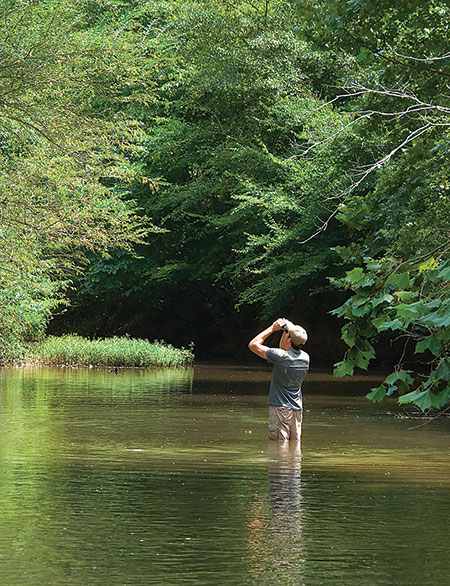 Big Canoe Creek Preserve
Big Canoe Creek Preserve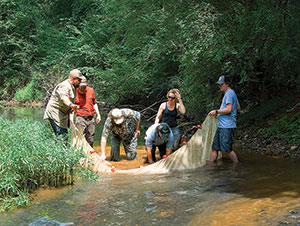 Two graduate students from the University of Alabama, Frank Gigliotti and Thomas Franzem showed up for the Bio-Blitz “just for fun. They were there looking for species of birds and insects. They are working with the State now for a return visit for a more thorough exploration.
Two graduate students from the University of Alabama, Frank Gigliotti and Thomas Franzem showed up for the Bio-Blitz “just for fun. They were there looking for species of birds and insects. They are working with the State now for a return visit for a more thorough exploration.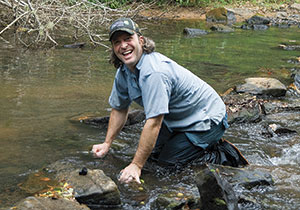 “For The Friends of Big Canoe Creek it has always been about protecting and educating ourselves and our community about Big Canoe Creek,” said Vickey Wheeler.
“For The Friends of Big Canoe Creek it has always been about protecting and educating ourselves and our community about Big Canoe Creek,” said Vickey Wheeler.

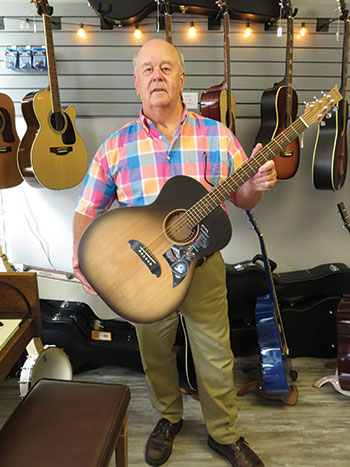 And that is exactly the way he wants it — for Ron Partain, since his mid teenage years, his life has centered on music — and it’s a love that he wants to share with the world. So he, with the help of long-time employee Karen Poe, distill that love into the store that has been open on Cogswell for 41 years now.
And that is exactly the way he wants it — for Ron Partain, since his mid teenage years, his life has centered on music — and it’s a love that he wants to share with the world. So he, with the help of long-time employee Karen Poe, distill that love into the store that has been open on Cogswell for 41 years now. Hesitant at first, Partain and a few of the other players realized a choir might be a great place to meet some young ladies. So he joined up, and his life’s path was set.
Hesitant at first, Partain and a few of the other players realized a choir might be a great place to meet some young ladies. So he joined up, and his life’s path was set.
 So, what’s next? A wellness center, he said, complete with indoor pool, workout facilities, classrooms for activities like aerobics or spinner biking, racquetball, physical, occupational and massage therapy and a walking track. He even envisions day care for ill children and after-hours daycare.
So, what’s next? A wellness center, he said, complete with indoor pool, workout facilities, classrooms for activities like aerobics or spinner biking, racquetball, physical, occupational and massage therapy and a walking track. He even envisions day care for ill children and after-hours daycare.
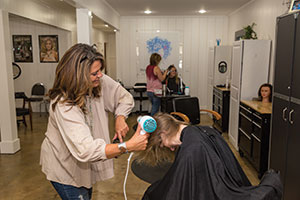 Hair. Beauty. Inspiration
Hair. Beauty. Inspiration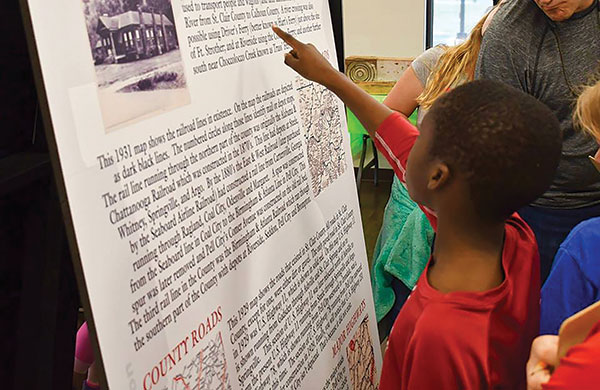
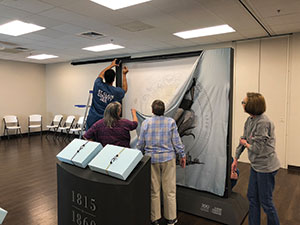 “Putting on something like this takes the efforts of several folks. Fortunately, we had a wonderful committee that volunteered a lot of hours to put this event together and be a part of it while it was exhibited,” said St. Clair County District Judge Alan Furr, who chaired the committee.
“Putting on something like this takes the efforts of several folks. Fortunately, we had a wonderful committee that volunteered a lot of hours to put this event together and be a part of it while it was exhibited,” said St. Clair County District Judge Alan Furr, who chaired the committee.